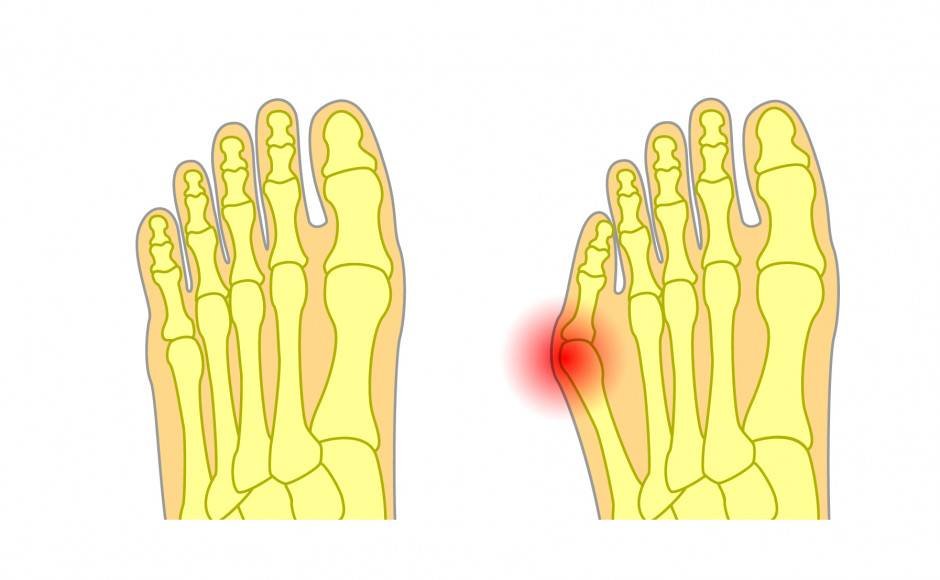Foot pain is a common condition that occurs in many people, especially after an injury. The outer side of the foot, also known as the lateral foot, is highly prone to experiencing pain or discomfort. This type of pain may be caused by a myriad of various causes, from mild to more serious ones. Being aware of some of the causes of pain on the lateral side of the foot caused by an injury can assist individuals in managing their symptoms better and in receiving appropriate treatment.
1. Sprained Ankle or Ligament Injuries
The most common reason for pain on the lateral side of the foot is a sprained ankle. A sprain occurs when the ligaments connecting the bones of the foot are stretched or torn. A sprain typically occurs when the foot is twisted, rolled, or turned in an abnormal manner, which results in inflammation and pain. The pain may be moderate or severe, based on the severity of the sprain, and may increase with walking or running.
A sprained ankle is marked by symptoms including swelling, bruising, and an inability to bear weight on the injured foot. In some cases, there may also be a limited range of motion. The initial treatment generally includes rest, ice, compression, and elevation (R.I.C.E.), but physical therapy or even surgery may be required for more severe sprains.
2. Fractures or Broken Bones
Another potential cause of pain on the lateral side of the foot is a bone fracture. The fracture of the foot may be caused by direct trauma, such as a fall, or repetitive overuse, such as excessive running or jumping. The fifth metatarsal bone, which is the long bone on the lateral side of the foot, is most likely to suffer fractures, especially in athletes or individuals participating in high-impact activities.
A fracture can cause sharp, localized pain that is aggravated by movement or pressure. In addition to pain, there may be visible swelling, bruising, and tenderness to the touch at the site of injury. A fracture is typically diagnosed with an X-ray, and treatment may involve immobilization in a cast or boot. In some cases, surgery is required to restore the bone to its proper position.
3. Tendonitis and Tendon Injuries
Tendons are the strong tissue strips that attach muscles to bones and play an important role in foot movement. The peroneal tendons, located on the outside of the ankle and the foot, are particularly susceptible to inflammation or tears. Inflammation of the tendons results in a condition called peroneal tendonitis. This kind of injury often occurs after an ankle sprain or another foot injury, causing pain on the outer aspect of the ankle and foot.
Individuals with tendonitis may experience pain, which is heightened with activity or use, or with repetitive use of the foot. Pain may also be associated with swelling, heat, and stiffness over the area. Rest and anti-inflammatory medication may alleviate symptoms, but in worse cases, physical therapy or even surgical intervention may be required to repair the torn tendon.
4. Stress Fractures
A stress fracture is a tiny crack in the bone, often caused by overuse or repetitive stress. Athletes, especially those participating in running, jumping, or other high-impact sports, are more likely to develop stress fractures. A lateral stress fracture of the foot can cause pain that increases over time, especially after extended physical exertion.
A stress fracture pain is usually dull and may be more noticeable with weight-bearing activity. Rest is the primary treatment for a stress fracture, but in some cases, a walking boot or crutches are necessary to limit pressure on the area while healing takes place. Stress fractures will worsen and lead to additional complications if not treated.
5. Bursitis
Bursitis is an inflammation of the fluid-filled sacs, called bursae, that cushion the bones, tendons, or muscles. In the foot, bursitis is most commonly found in the heel or on the outside of the foot. It can occur following an injury, overuse, or repetitive motion.
When bursitis occurs on the outside of the foot, it can cause swelling, tenderness, and pain that worsens with activity. The pain can either be sharp or aching and can become worse with tight shoes or excessive walking. Bursitis is usually treated with rest, ice, and anti-inflammatory drugs. Corticosteroid injections or drainage of the bursa may be necessary in severe cases to resolve inflammation.
6. Morton’s Neuroma
While most often associated with pain in the ball of the foot, Morton’s neuroma will at times produce pain on the outside of the foot. Morton’s neuroma is what occurs when the nerve between the toes becomes inflamed or thickened, leading to pain, numbness, and tingling of the foot. While the pain is typically worst between the third and fourth toes, it will quite often radiate to the outside of the foot.
Morton’s neuroma is usually brought about by pressure or irritation due to ill-fitting shoes or high heels. Individuals with this condition may experience sharp pain, a burning sensation, or a feeling as though something is in the shoe, pressing against the foot. Treatment includes a shoe change, padding or orthotics, and in severe cases, surgical removal of the neuroma.
7. Peroneal Nerve Injury
The peroneal nerve runs on the lateral side of the leg and foot, providing sensation and movement control. Pain, tingling, numbness, or weakness of the foot, particularly the lateral side, can be caused by damage to or compression of the peroneal nerve. This type of injury can result from trauma, such as an ankle sprain, or from chronic compression of the nerve, such as that resulting from crossing the legs or from tight shoes.
Individuals with peroneal nerve injury may experience difficulty in ankle or foot movement and can also experience weakness or a sensation of heaviness. Treatment may involve physical therapy, rest, and, in some instances, the use of a brace or splint to protect the nerve. In severe instances, surgery may be required to relieve pressure on the nerve.
8. Iliotibial Band Syndrome (ITBS)
More commonly associated with knee pain, iliotibial band syndrome (ITBS) is sometimes the cause of pain on outside of foot when walking. The iliotibial band is a tight band of tissue that runs down the outside of the leg and can tighten or become inflamed, resulting in pain along the outside of the leg and foot.
ITBS is most commonly caused by repetitive or overuse, particularly in cyclists and runners. ITBS pain is typically felt along the lateral knee and thigh but can radiate down the outside of the foot. Treatment involves rest, stretching, and strengthening exercises to help lessen tension in the iliotibial band.
Conclusion
Pain on the outside of the foot after an injury can result from various causes, including sprains, fractures, tendonitis, and nerve injuries. While the pain may vary in intensity and duration, understanding the potential causes is crucial for effective treatment. If you are experiencing persistent or worsening pain on the outside of your foot, it is important to seek medical advice to ensure proper diagnosis and treatment.



